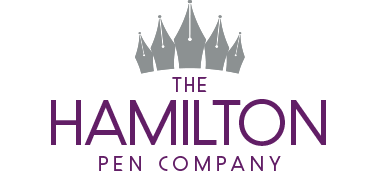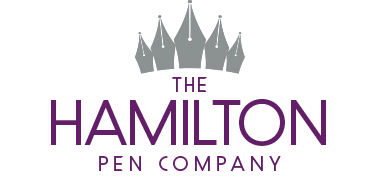A Brand is Born
Kaweco’s foundations began in Heidelberg near the University city of Bonn, an ideal location as its college town status particularly of the arts and science meant that reliable writing instruments were in high demand. The writing instrument industry had begun to boom with the creation of the steel nib which slowly overtook its predecessor the Goose Quill. Mercents Carl Luce and Friedrich Enßlen started out in 1883 with the production of wooden dip pens as well as the sale of imported steel and gold nibs.

Image replicated with thanks and all credit to Kaweco
Initially, their vision of innovative writing products was not as profitable as hoped and, as you will see, the company changed ownership several times. The first instance that we see the Kaweco brand name appear is with Heinrich Koch and Rudolph Weber when they took over the Heidelberg dip pen company in 1899. The name ‘Kaweco’ came from the founders surnames; KOch, WEber and COmpany. Although we now know the brand as Kaweco, initially the name referred to only one fountain pen series. The majority of the manufacturing process was completed by hand using a workforce of 25 skilled workers who produced the pens and also ebonite eyedroppers. The nibs used were imported from the US company, A. Morton who were based out of New York.
It was in 1909 that a patent for the Kaweco safety pen was obtained, the model featured an innovative screw thread at the turning knob of the mechanism to prevent ink leakage.

Image replicated with thanks and all credit to Kaweco - 'The first safety fountain pen patented by KAWECO, D.R.G.M. 224101'
This release coincided with the 10th anniversary of Kaweco and 25th anniversary of the original Heidelberg dip pen factory. The anniversaries were celebrated in an article featured in a local newspaper which listed each of their 88 employees by name. One thing that has come from researching this company's intriguing history is that they have always existed with a sense of pride over their work and products and it was never purely the achievement of the owners but rather a collective effort which was richly documented and celebrated with photographs and written recollection - but i digress.
From 1910, the company which predominantly produced dip pens recorded hundreds of options in their catalogue. It was unusual to find such variety. The dip pens were so varied, in part, due to the use of a multitude of materials, including; tonkin pipe, Brazil pipe and German sump pipe as well as wooden options in polished and matte finishes, ebonite and glass options. All the pens have variety within their material grouping too, with rounded and sleek designs alongside more angular offerings. Most impressive of all the pens were produced were the highly prized (and suitably priced) ivory and mother-of pearl options.
Kaweco and the Community - Kaweco grows
What is interesting to note is that Kaweco began production of fountain pens which had not been seen en masse, so much so that the company had to persuade many customers that there was an advantage to a fountain pen which contained the ink. There was much concern about the possibility of leakage and even the ‘point’ (pardon the pun) of a pen which contained ink when the dip pens had been so commonly used prior. One way to belay the concerns of customers was with the promotion of the Kaweco safety pens and introduction of variations to the design which would be marketed to specific demographics. For example, a short version of the safety pen was promoted as a great on-the-go use pen for ‘ladies, officers and sportspeople’. With its gold nib, the flexibility and resistance to rust was a highlight and the fact that ink would be stored in the pen itself, safely tucked away behind two screw thread barriers meant that it grew in popularity.
Kaweco continued to connect with it’s local audience with Perkeo, a local tragicomic celebrity, as a trademark for the company from early on. With its growing demand and ever-increasing success, Kaweco was flourishing into an important speciality trade brand. Having outgrown their early workshops, a new factory was constructed in Handschuhsheim in 1912 by architect Julius Zinser who is perhaps better known for his football career having played in some of the very first international matches. A short two years later, A. Morton passed away which would disrupt the import of gold nibs. In a bold move, Kaweco took on the company and shipped its assets and equipment from New York to Heidelberg. With support from some of the specialists who worked at A. Morton, Kaweco’s employees were trained in the process and thus began a new chapter in Kaweco’s history, one in which they produced their own specialist gold nibs. The War which began in 1914 also increased the demand for the safety pen as it was far more practical to travel with and use in less than ideal circumstances. In fact, Kaweco created a special safety pen with patriotic imprint in shatterproof packaging for soldiers in the field. The War itself left the factory and company relatively unscathed although Koch had left the company to move to the US just prior to the outbreak of war and during the war years there was a deterioration of supplies. The company was always ready to evolve and in 1921 became a public holding company employing around 600 people across several factories.
The Rise and the Fall
Kaweco began to use the slogan ‘the oldest German brand’ because of its early specialism in fountain pens whereas competitors ( such as Soennecken) who had been in production at least as long as Kaweco were not afforded the title as they had been producing other items and writing instruments were not considered their ‘main’ output. Kaweco was a huge success at the time, even during the post-war inflation, their production levels remained high and their range of products continued to grow. In 1922, a large addition to the existing factory buildings was constructed after a fire and to increase capacity of the company. It wasn't until 1925 and the first signs of the economic decline that Kaweco, who had been the market leader, began to see a decline in popularity in favour of competitors. Mont Blanc and Soennecken began to gain some of the market shares and the mainstay of Kaweco, the safety pen, began to face the challenges of the new materials and filling systems being presented by other companies. Parker produced colourful acrylic fountain pens which were the nail in the coffin for the safety pen which comparatively felt outdated.
With the most appreciated product waning in popularity, Kaweco relied heavily on marketing and innovating existing products. They began producing pens from Galalith (which is essentially engineered horn) and switching up the design of their products and packaging. With views for international growth, the partnership with large pencil factories was a smart move which many dip pen companies would make. The economic strength of these pencil manufacturers having their own international distribution meant they were a considerable asset to Kaweco. Interestingly, the Johann Faber company took over the sales distribution in the Netherlands for the Heidelberg dip pen factory (Faber-Castell is another company which has an interesting history - find out more here).
Although the relationship between pen and pencil companies and the onset of international trade were very positive, by 1927 Kaweco was reporting severe losses even though their sales totals were still high. It is likely that a large portion of the losses can be attributed to Kaweco seeking to modernise and thus overly investing in innovation and new designs to enable them to keep up with the competition. Unfortunately for Kaweco ( known at the time by their full name - The Heidelberg Dip Pen Factory Koch, Weber & Co), competitors were also growing and innovating at the same time and in May 1929 they were forced to file for bankruptcy. Four months later it was announced that The Baden Fountain Pen Company would acquire Kaweco in its entirety including all patents, registered designs, trademarks and production rights. Baden had initially shown interest in acquiring Kaweco because of its international reputation. The 1920’s had shown the importance of marketing and branding (led by the successes of Parker) which led to a representative of Aurumia ( a brand under The Baden Fountain Pen Factory), Max Sauter, to plead the case of the importance of Kaweco’s Brand to the Baden Factory owners. Supported by Kaweco’s established position of one of the leading German brands up until the war and was still considered to be a pioneer of the German Fountain pen. These negotiations and their outcomes were incredibly interesting when we consider that the saving grace of Kaweco was its brand identity. In the 21st century we are well versed in the value of a brand but the late summer of 1929 really was an example of the emergence of customer-oriented companies and the value of marketing and advertising which would be placed on modern companies going forward.

Image replicated with thanks and all credit to Kaweco
The founders of the Baden fountain pen factory were both experienced in the industry with Friedrich Grube having worked for Bohler & Co A.G as a merchant since 1922 overseeing shipping, purchasing and repairs and Heinrich Woringen had begun his career in the industry at the age of just 14. Upon acquiring Kaweco, Grube and Woringen merged products and utilised Aurumia writing instruments with the new Kaweco logo. Perhaps most dominant were the new push button filling systems, modern pressure fountain pens and self-filling pens featuring a lever mechanism.
The Kaweco Sport: The Prequel
The unique design of the Kaweco Sport ensured its bestseller status from the 1930s until the present day. The Sport features a unique design and thus made for popular gifts and promotional items. The 1950’s and 1960’s were a time of economic prosperity in Germany and many companies used the Kaweco Sport as an advertising tool. In 1960, Friedrich Grube died unexpectedly leading to his son Wilhelm taking over the company. With Wilhelm steering the ship, many Kaweco designs were modernised and made slimmer so as to be more attractive to a younger audience of customers. A physicist was employed from the University of Stuttgart to undertake physical calculations on the construction of ink feeds and aspects of the pen production - pen manufacture was serious business at this time and most companies in the industry were heavily investing and focussed on research and development. The advent of injection molding helped progress the industry from one with a multitude of production steps and labour intensive processes to a transformed process requiring far less manual involvement which led to mass production.
Another bump in the road
Between 1969 and 1980, Kaweco faced a period of difficulties beginning with the entering into a settlement agreement in 1969 with all patents, registered trademarks and designs transferred to Mrs Grube. Kaweco continued to produce the Sport model and a number of other products from the Liselotte Grube Factory of Modern Writing Equipment. A contract for the official Olympic writing instrument for the 1972 Munich Games seemed to have the potential to be a turning point after a tough couple of years. The Kaweco Olympia set was created and bore the XX emblem of the games and a metal jewellry pendant. The games, which were the first to be held in Germany since the Berlin games of 1936 which took place under Nazi Rule so great efforts were made to showcase a new Germany through the Munich games - this desire was not to be as the games were plagued with controversy and the dreadful events of September 5th with the horrendous terrorist attack on the Isreali athletes and coaches.

Image replicated with thanks and all credit to Kaweco
The 1970s had seen the writing instrument become much cheaper due to mass production and outsourcing, however beneficial this may have been to customers who had once been priced out of certain pens this posed a longer term issue for the entire industry. Having moved from in-house production of parts for the majority to outsourcing most parts was economically disastrous and the structural changes in production methods, threatening even the most well-established manufacturers ,like Kreuzer or Mont Blanc...Ultimately, Kaweco was forced to close its doors in 1980 amid financial difficulties.
H & M Gutberlet gmbh meets Kaweco
At the time that Kaweco was halting manufacturing, Michael Gutberlet was buying his first fountain pen at a flea market in Nuremberg, as per his own description in ‘Gutberlet crossing Kaweco’ he bought an ‘eterna’ safety pen from Italy, intended as a gift for his father Horst. This act became the moment both men began to develop a passion for collecting writing instruments. Several years later a new addition to the collection changed the course of pen history. Michael was infatuated by the unusual size and design of the Kaweco Sport and decided that the Sport needed to be reproduced and the Kaweco brand needed to be restored. In 1994 after having legal experts researching the trademark rights to the name, h & m gutberlet gmbh registered ‘Kaweco’ as their own trademark. The first order of business was to develop a new Sport series based on the 1935 design. The German market was tough at the time and although they experienced initial success by co-branding with worldwide distributor Diplomat, to launch ‘Kaweco, by Diplomat’ in 1996, that success was short-lived. In 1999, h&m gutberlet were unable to continue with their distribution structure after the death of Joachim Michaelis leading to the sale of IMCO and the dispersion of the collaboration.

Image replicated with thanks and all credit to Kaweco
Refusing to let go of the dream to relaunch Kaweco back into the pen industry, Michael worked tirelessly to build new distribution and export channels with over 8 countries signed-on by 2005. Fueled by his passion for the product and the regular inquiries from customers, the brand began to build and grow. In this period of growth we saw the first limited edition of the Kaweco Sport launch in celluloid green followed by the AL sport in 2003 and ART Sport in 2004. The Latter two products opened up a new price range for Kaweco and their success funds the development of more new products including the Combimatic limited edition fountain pen/twist pencil.
2012 saw the release of the Liliput made from Aluminium and described as the small but giant pen. The liliput was a great success and the development of the Special Series (which brought the Sport and twist pencils up-to-date) established Kaweco as a recognisable brand once again. Gutberlet attributes much of the success of Kaweco to the history of the brand and the sensitive nostalgia of the design of Kaweco’s products which although link to historical products, connect with modern technology and styling. To this day, Kaweco ensures that design and quality are at the core of their ethos whilst developing classic designs and innovating new takes on the iconic look and feel of Kaweco.

Kaweco Liliput Fountain Pen - Fireblue Steel
Explore the full collection of Kaweco products available at The Hamilton Pen Company



